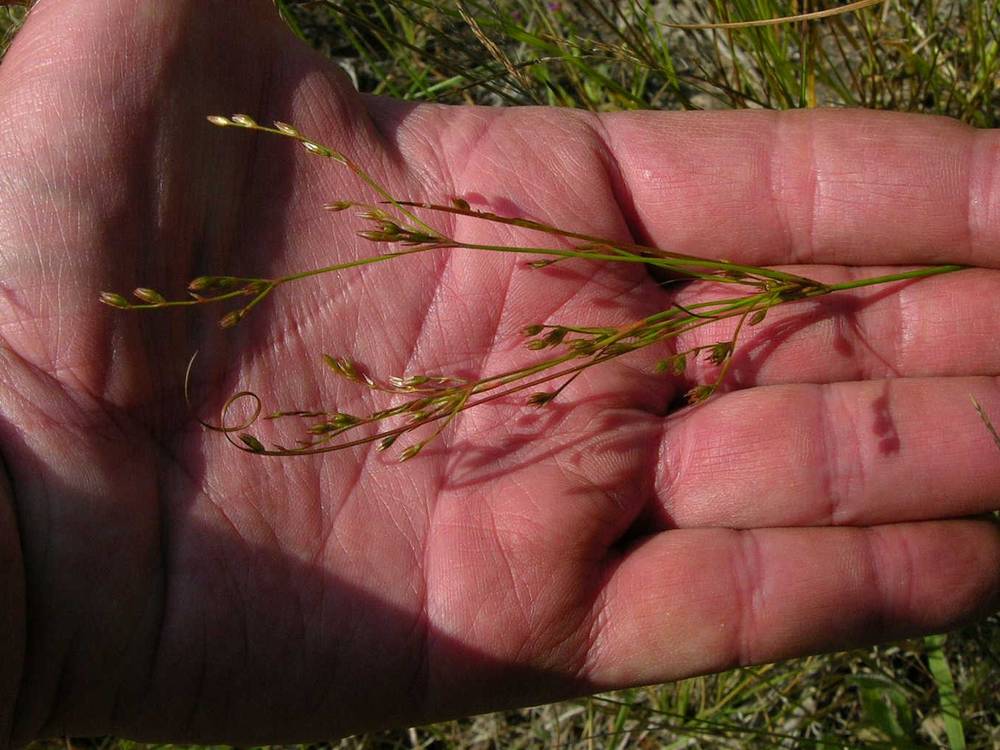Juncus anthelatus
Kentucky rush, poverty rush
thin and wiry;
blade flat and slightly inrolled;
auricles soft and thin, 1.3–4 mm (longest auricles on early season shoots; those produced late in season are usually short), scarious or dirty white to translucent dull; acute or acuminate (those on late season shoots often blunt).
large, cymose, 6–21 cm, often reddish;
bractlets subtending flowers usually acute;
flowers solitary at the nodes;
internodes longer than flowers.
tepals 6, green to light brown or reddish;
tepal tips acuminate; erect;
stamens 3;
filaments 0.8–1.1 mm;
anthers usually 0.6–0.8(1) mm;
styles 0.2–0.4 mm.
2–3 mm, usually less than 75% of the length of the tepals, light brown to red;
apex rounded to acute, not crested, 1-chambered.
0.3–0.6 × 0.2–0.25 mm, apiculate.
=80.
Juncus anthelatus
Shores, wet prairie remnants, seasonally wet ground, ditches. 100–500 m. WV. CA, WA; south to Mexico; central and eastern North America; New Zealand. Exotic.
Juncus anthelatus is a rare introduction, often with a much larger inflorescence than J. tenuis.
Peter Zika
- Local floras:
BC,
CA,
OR,
WA
- Local Web sites:
CalFlora,
CalPhotos,
Flora NW,
PNW Herbaria
WildflowerSearch
iNaturalist (observations)
USDA Plants Database
- LBJ Wildflower Center
- SEINet
- Plants of the World Online
- Encyclopedia of Life
- Wikipedia
- Google Image Search

